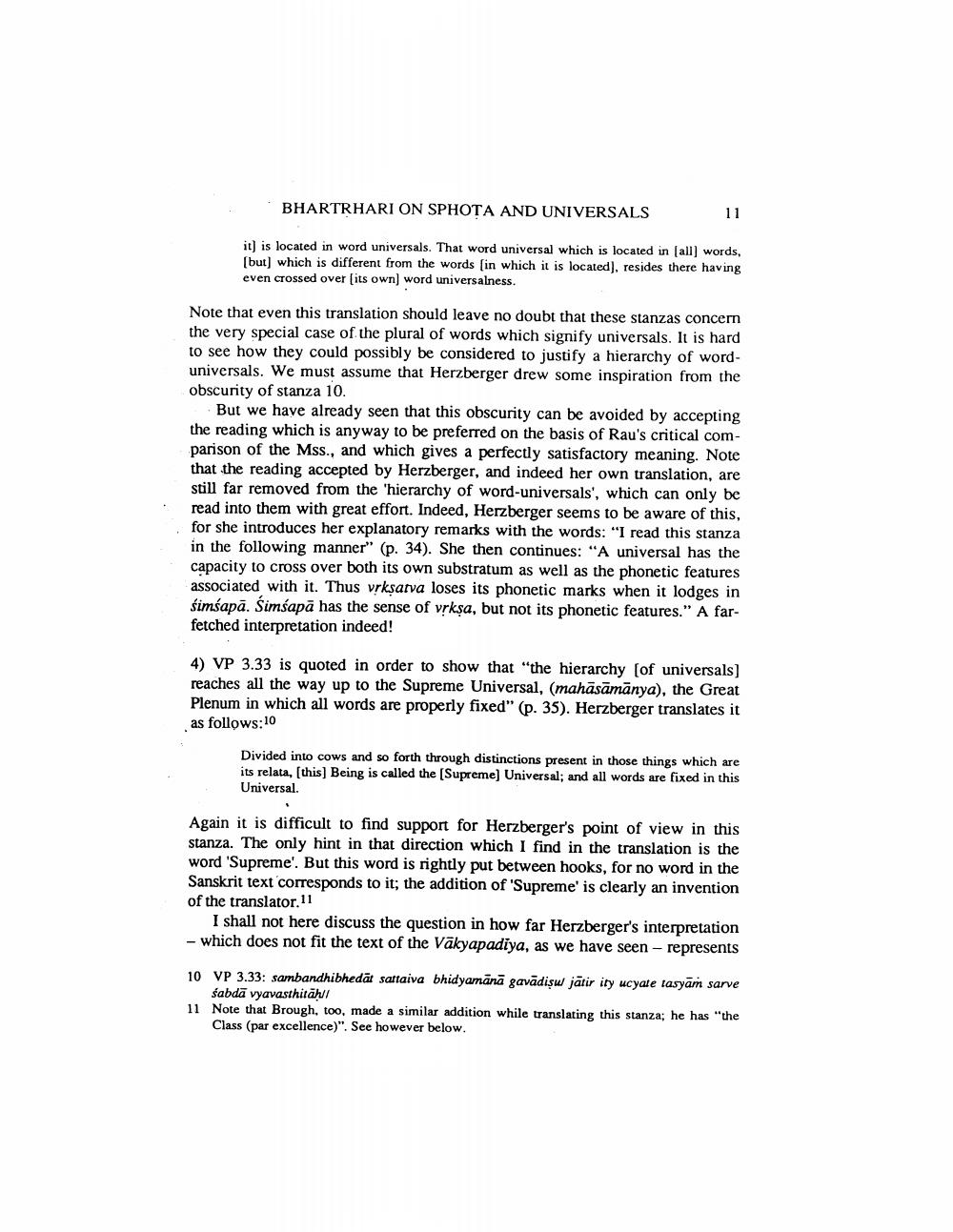Book Title: Studies On Bhartrhari 3 Author(s): Johannes Bronkhorst Publisher: Johannes Bronkhorst View full book textPage 7
________________ BHARTRHARI ON SPHOTA AND UNIVERSALS 11 it) is located in word universals. That word universal which is located in (all) words, (but) which is different from the words (in which it is located), resides there having even crossed over its own) word universalness. Note that even this translation should leave no doubt that these stanzas concern the very special case of the plural of words which signify universals. It is hard to see how they could possibly be considered to justify a hierarchy of worduniversals. We must assume that Herzberger drew some inspiration from the obscurity of stanza 10. But we have already seen that this obscurity can be avoided by accepting the reading which is anyway to be preferred on the basis of Rau's critical comparison of the Mss., and which gives a perfectly satisfactory meaning. Note that the reading accepted by Herzberger, and indeed her own translation, are still far removed from the 'hierarchy of word-universals', which can only be read into them with great effort. Indeed, Herzberger seems to be aware of this, for she introduces her explanatory remarks with the words: “I read this stanza in the following manner" (p. 34). She then continues: "A universal has the capacity to cross over both its own substratum as well as the phonetic features associated with it. Thus vrksatva loses its phonetic marks when it lodges in simšapā. Simšapā has the sense of vrkșa, but not its phonetic features." A farfetched interpretation indeed! 4) VP 3.33 is quoted in order to show that "the hierarchy (of universals] reaches all the way up to the Supreme Universal, (mahāsāmānya), the Great Plenum in which all words are properly fixed" (p. 35). Herzberger translates it as follows:10 Divided into cows and so forth through distinctions present in those things which are its relata, [this] Being is called the Supreme) Universal; and all words are fixed in this Universal Again it is difficult to find support for Herzberger's point of view in this stanza. The only hint in that direction which I find in the translation is the word 'Supreme'. But this word is rightly put between hooks, for no word in the Sanskrit text corresponds to it; the addition of Supreme' is clearly an invention of the translator. 11 I shall not here discuss the question in how far Herzberger's interpretation - which does not fit the text of the Vakyapadiya, as we have seen - represents 10 VP 3.33: sambandhibhedāt sattaiva bhidyamanā gavādisul jātir ity ucyale tasyām sarve sabda vyavasthital 11 Note that Brough, too, made a similar addition while translating this stanza; he has "the Class (par excellence)". See however below.Page Navigation
1 ... 5 6 7 8 9 10 11 12 13 14
